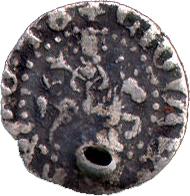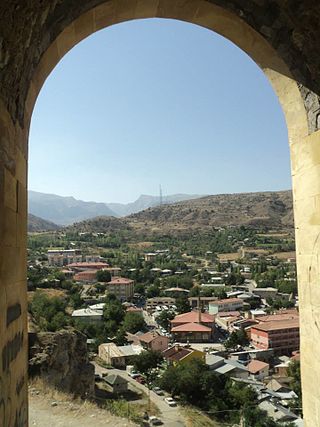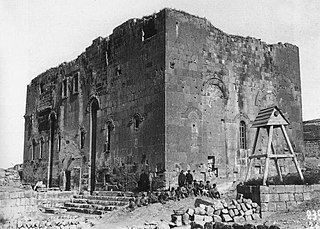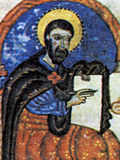Related Research Articles

The history of Armenia covers the topics related to the history of the Republic of Armenia, as well as the Armenian people, the Armenian language, and the regions of Eurasia historically and geographically considered Armenian.

The Battle of Manzikert or Malazgirt was fought between the Byzantine Empire and the Seljuk Empire on 26 August 1071 near Manzikert, theme of Iberia. The decisive defeat of the Byzantine army and the capture of the Emperor Romanos IV Diogenes played an important role in undermining Byzantine authority in Anatolia and Armenia, and allowed for the gradual Turkification of Anatolia. Many Turks, travelling westward during the 11th century, saw the victory at Manzikert as an entrance to Asia Minor.

The Principality of Antioch was one of the crusader states created during the First Crusade which included parts of modern-day Turkey and Syria. The principality was much smaller than the County of Edessa or the Kingdom of Jerusalem. It extended around the northeastern edge of the Mediterranean, bordering the County of Tripoli to the south, Edessa to the east, and the Byzantine Empire or the Kingdom of Armenia to the northwest, depending on the date.

Edessa was an ancient city (polis) in Upper Mesopotamia, founded during the Hellenistic period by King Seleucus I Nicator, founder of the Seleucid Empire. It later became capital of the Kingdom of Osroene, and continued as capital of the Roman province of Osroene. In Late Antiquity, it became a prominent center of Christian learning and seat of the Catechetical School of Edessa. During the Crusades, it was the capital of the County of Edessa.

Constantine II, , born Guy de Lusignan, was elected the first Latin King of Armenian Cilicia of the Poitiers-Lusignan dynasty, ruling from 1342 until his death in 1344.


Isabella, also Isabel or Zabel, was queen regnant of Armenian Cilicia from 1219 until her death in 1252.
Ruben I,, also Roupen I or Rupen I, was the first lord of Armenian Cilicia. He declared the independence of Cilicia from the Byzantine Empire, thus formally founding the beginning of Armenian rule there. The Roupenian dynasty ruled Cilician Armenia until 1219.

Constantine I or Kostandin I was the second lord of Armenian Cilicia. He ruled the greater part of the Taurus Mountain regions, while managing the towns and lands within his domain. He provided ample provisions to the Crusaders, for example during the difficult period of the siege of Antioch in the winter of 1097. He was a passionate adherent of the separated Armenian Church.
Matthew of Edessa was an Armenian historian in the 12th century from the city of Edessa. Matthew was the superior abbot of Karmir Vank', near the town of Kaysun, east of Marash (Germanicia), the former seat of Baldwin of Boulogne. He relates much about the Bagratuni Kingdom of Armenia, the early Crusades, and the battles between Byzantines and Arabs for the possession of parts of northern Syria and eastern Asia Minor. Byzantine authors such as Joannes Zonaras and Anna Comnena were well versed in their particular spheres, but uninformed regarding Edessa and neighboring lands which are treated by Matthew.

Kirakos Gandzaketsi was an Armenian historian of the 13th century and author of the History of Armenia, a summary of events from the 4th to the 12th century and a detailed description of the events of his own days. The work concentrates primarily on the history of Medieval Armenia and events occurring in the Caucasus and Near East. The work serves as a primary source for the study of the Mongol invasions and even contains the first recorded word list of the Mongolian language. The work has been translated into several languages including Latin, French and Russian.

Khosrovidukht was an Armenian hymnographer and poet who lived during the early 8th century. After her slightly earlier contemporary Sahakdukht, she is the first known woman of Armenian literature and music, and among the earliest woman composers in the history of music. Daughter of the king of Goghtn, Khosrov Goghtnatsi, her father was killed and she was imprisoned in a fortress of Ani-Kamakh for twenty years. Her brother was imprisoned and eventually killed; Khosrovidukht's only surviving work, the šarakan "Zarmanali e Ints" was dedicated to him. Its authenticity has occasionally been doubted, with some scholars attributing it to Sahakdukht. The work did not enter the general repertory of šarakan liturgy but was eventually approved by the Armenian Church for religious use.

Shirakavan ; founded as Yerazgavors and later Yerazgavork, was a medieval Armenian city and one of the 13 historic capitals of Armenia, serving as a capital city between 890 and 929 during the Bagratid Kingdom of Armenia.
The Zakarids or Zakarians, also known by their Georgian name as Mkhargrdzeli, were a noble Armenian–Georgian dynasty. Their name in Georgian, Mkhargrdzeli, or in Armenian: Երկայնաբազուկ, (Yerkaynbazuk) meant long-armed. A family legend says that this name was a reference to their Achaemenid ancestor Artaxerxes II the "Longarmed". According to Cyril Toumanoff / Encyclopædia Iranica, they were an offshoot of the Armenian Pahlavuni family. The Zakarians considered themselves Armenians.

Ani is a ruined medieval Armenian city now situated in Turkey's province of Kars, next to the closed border with Armenia.

Richard Hovannisian was an American historian and professor at the University of California, Los Angeles. He is known mainly for his four-volume history of the First Republic of Armenia.
Michael the Syrian ,(Classical Syriac: ܡܺܝܟ݂ܳܐܝܶܠ ܣܽܘܪܝܳܝܳܐ, romanized: Mīkhoʾēl Sūryoyo), died 1199 AD, also known as Michael the Great or Michael Syrus or Michael the Elder, to distinguish him from his nephew, was a patriarch of the Syriac Orthodox Church from 1166 to 1199. He is best known today as the author of the largest medieval Chronicle, which he wrote in the Syriac language. Some other works and fragments written by him have also survived.

Oshin of Lampron was an Armenian nakharar. Historical sources mentioned that he was a lord of a fortress near the city of Ganja Caucasian Albanian origin, who migrated in the early 1070s to Cilicia and founded the House of Lampron that ruled the Armenian Kingdom of Cilicia in the 12th and 13th centuries.

Zakarid Armenia was an Armenian principality between 1201 and 1360, ruled by the Zakarid-Mkhargrzeli dynasty. The city of Ani was the capital of the princedom. The Zakarids were vassals to the Bagrationi dynasty in Georgia, but frequently acted independently and at times titled themselves as kings. In 1236, they fell under the rule of the Mongol Empire. Their descendants continued to hold Ani until the 1330s, when they lost it to a succession of Turkish dynasties, including the Kara Koyunlu, who made Ani their capital.
The 602 Surb Karapet Monastery earthquake took place in 602 and affected the Surb Karapet Monastery, located in the district of Taron.
References
- ↑ Victor Tolan, John (2000). Medieval Christian Perceptions of Islam. p. 51. ISBN 978-0-415-92892-2.
- ↑ Steven Runciman. A History of the Crusades. — Cambridge University Press, 1987. — Vol. I. — P. 335. "Later Armenian chroniclers, such as Samuel of Ani and Mekhitar of Airavanq, writing at the end of the twelfth century, and Kirakos of Gantzag and Vartan the Great, in the thirteenth century, treat only briefly of the First Crusade."
- ↑ Hacikyan, Agop Jack (2000). The Heritage of Armenian Literature: From the sixth to the Eighteenth Century. p. 344. ISBN 0-8143-3023-1.
- ↑ "Samuel of Ani (Anetsi)". The Penny Cyclopædia of the Society for the Diffusion of Useful Knowledge. Vol. II. London: Charles Knight. 1834. p. 363.
